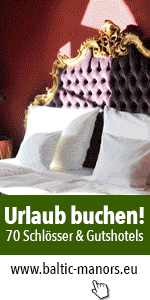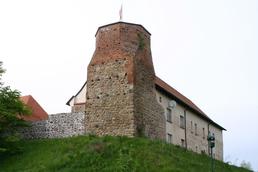Burg Wesenberg
The Wesenberg Castle was built in the mid-13th century. Henricus Misnerus was the feudal bailiff there (researchers believe he was the minstrel Heinrich Meissner the Elder) until the end of the century.
The Stargard land, which Wesenberg was part of, went to Heinrich the Second of Mecklenburg by marriage to the Brandenburger Margrave’s daughter Beatrix in 1292. When his wife died without leaving a male heir, the Brandburgers demanded the dowry back. Heinrich the Second did not want to give the land back which started the Margrave War. Heinrich the Second won against Brandenburg superiority in the decisive battle of 1316. A peace treaty was signed in 1317 after which Wesenberg was pledged, as well as other castles, so that Heinrich the Second could meet his contractual duties. Margrave Valdemar died in 1319, and the war carried on. Heinrich the Second’s enemies gathered. Johann von Werle was among them, trying to win back his family’s old property. He succeeded in gaining ownership of the castle in the summer of 1322. He then had to admit defeat to Heinrich the Second six months later. Heinrich had to pledge lands due to the costly battles. So Wesenberg came to Knight Wedege von Plote. The family stayed at Wesenberg until 1458. Then the ownership fell to the Dukes of Mecklenburg-Stargard. The Mecklenburg Dukes made a baronial office out of Wesenberg at the start of the 16th century. Duke Hans Albrecht pledged the office in 1618. Hans Jürgen von Glöde took it over. When he died, it went to Jaques Pignier in 1702. The office was given to Duke Carl, the Prince of Mirow, in 1731.
It went to the ducal chamber after his death in 1752. The end of the office came towards the end of the 18th century. Large parts of the castle had long been destroyed by this point, probably by a fire in 1630. The great house in the castle was uninhabitable more than three decades later. It was a complete ruin in 1677. All the buildings in the courtyard were sold to the miller Schinn for demolition in 1773. The land was tenanted. This was all left to the tar maker Carl Aurin in 1780. Various tenants followed until the ducal chamber rebought the buildings in 1812. Only the remains of the old tower as well as the southern surrounding wall remained from the castle for a long time which was a simple replacement for the earlier great house. The new building built in the mid-1850s burnt down in 1917 and was then rebuilt. It was dedicated in 1918 by the Grand Duke of Schwerin. Anglers and foresters lived in the castle until 1939. The angler apartments had to be freed up for the NSDAP (Nazi Party) and its organisations in 1935. The building was destroyed by fire in 1945. The forestry administration extended the castle in 1950. Several apartments and a kiln were built which were used until the end of the 1950s.
The castle is now under ownership of the town. There has been a castle association in Wesenberg since 1994. The Wesenberg Tourist Office combined with a traditional inn moved into the castle in 1996.


